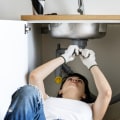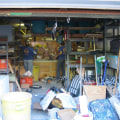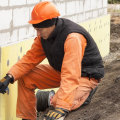In most cases, you should wait 4 to 6 weeks before repairing cosmetic damage to your home. This is because after you have the foundation repaired, your house will have to self-adjust. Note that when your base was originally moved, the frame moved with it. As a result, the wall frames also became uneven.
After fixing the base, the frame may return to its position immediately or it may never return completely to normal. You may still have visible cracks in walls or bricks after repair. Wait a few weeks after the repair of the foundation to see if there are any changes in the existing cracks and to see if new ones develop. After the base settles, you can begin to fill in the cracks.
These are aesthetic problems, but it is necessary to fill the outer cracks to prevent water or insect infiltration. While you obviously want to wait until the cause of the problem has been fixed, in this case the base, can you start repairing the other problems right away? In reality, it is better to wait at least six months before doing minor repairs, such as replacing drywall. Why? Well, the same reason you caused the problem, your foundation will settle. After the repair of the base, the repaired base will settle again in a similar way as it was established after its first installation.
It will be minor and probably won't cause any new issues, but you'll want to let it be resolved before you fix the above issues. It would be a shame to install new drywall in an area only to find them cracked again a few months later. Signs of a foundation settlement can be very subtle at first; many homeowners can spend months or even years before noticing a crack in their foundation. However, long-term damage from foundation settlement continues and will lead to more serious foundation problems.
How bad is the damaged, sunken or tilted base? If the damage is limited to a small crack or settlement of a few inches, the base repair process can be completed in as little as one day. If your house has been built on a solid foundation, it won't take long to get installed. In fact, movement will be limited, as there is little room to accommodate. In such cases, it takes about a year before the building can be said to have stabilized.
Some buildings take up to two years to install. Slab pillars are also inappropriate for repairing bulging foundations, where the ground is being lifted by expansive soils or by frost. These pillars are driven into the soils under the foundations, then each pillar is connected to the foundation of the structure by means of a steel support. Sometimes this happens when windows and doors are installed or adjusted while the base is not level.
In areas such as Dallas and Fort Worth, foundations tend to move back and forth throughout the year due to the extensive clay soils of North Texas. These pillars are designed to support a concrete floor that sits and are not suitable for stabilizing the foundation wall. Cracking on the steps of stairs is one of the surest signs of foundation settlement and is very common in bricks on concrete block walls. Tilting chimneys that separate from the house are one of the most intimidating and dramatic signs of a foundation settlement.
The settlement of the foundation and the movement of the house can occur when a layer of soil cannot support the weight of the house. Cracks in the concrete floor slab can be a sign of foundation settlement, but can also be a sign that only the slab floor has settled. An opening cut in any wall is a weak spot, so signs of foundation settlement and movement of the house often appear around door and window openings. There are several different types of foundation pillars; each is designed to address a different type of foundation problem.
The following are some of the most common ways in which the foundation settlement can be made visible to the homeowner. Remember that the sooner a problem is detected, the greater the chances of restoring your base quickly and with little or no complications. .







